In this post, you’ll find information about a use case for one of the more impactful projects where TableAir assisted a large organization of 6000+ employees in starting to return to their office. We want to share how almost any company could apply the same workspace strategy and #ReturnToWork fast and smartly.
One of our customers has implemented TableAir and provided access to their 3 office buildings (18 floors) for 6000 employees with an initial desk availability of 30%. Meaning roughly 1 of 3 desks are available to be booked. This helped them to maintain physical distancing while allowing employees to come back and enjoy their workspace since June 15th.
The available desk allocation will increase with respect to the changing situation and after analyzing the demands from employees. The plan so far is to increase availability gradually from 30%, 50%, and eventually 100%.
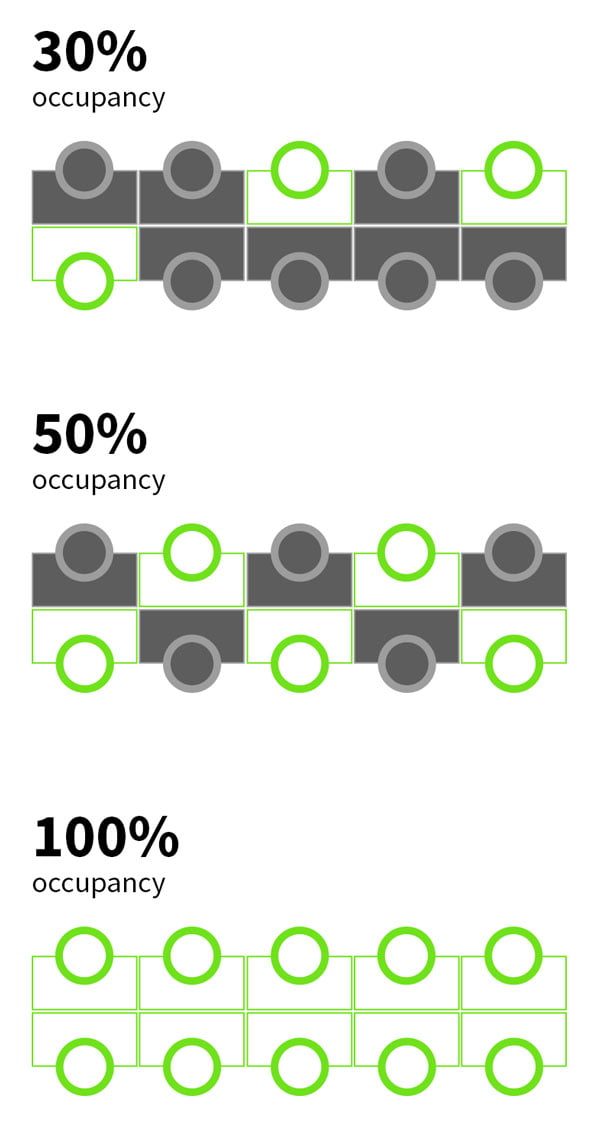
So far, more than 40 groups (for different employee and workspace groups) are helping people return to the office. The group functionality ensures that only those people who have permission to use certain desk, can use the desk booking functionality.
Desks are also being cleaned every time after use. Contact tracing allows customers to backtrack the employee and provide a list of nearby users. In case an infected person becomes apparent, a list of nearby people can be identified and provided to the management.
In the mentioned case, an unfortunate event happened when one user became aware of infection with Covid-19; fortunately enough, it was traced quickly, and people who worked nearby for the last week were identified. The event happened on Friday; the entire floor was immediately locked, bookings on the entire floor were disabled and thorough disinfection of the floor performed. On Monday evening, desks were made available for bookings again, and people could utilize, sanitize, and hazard-free environment.
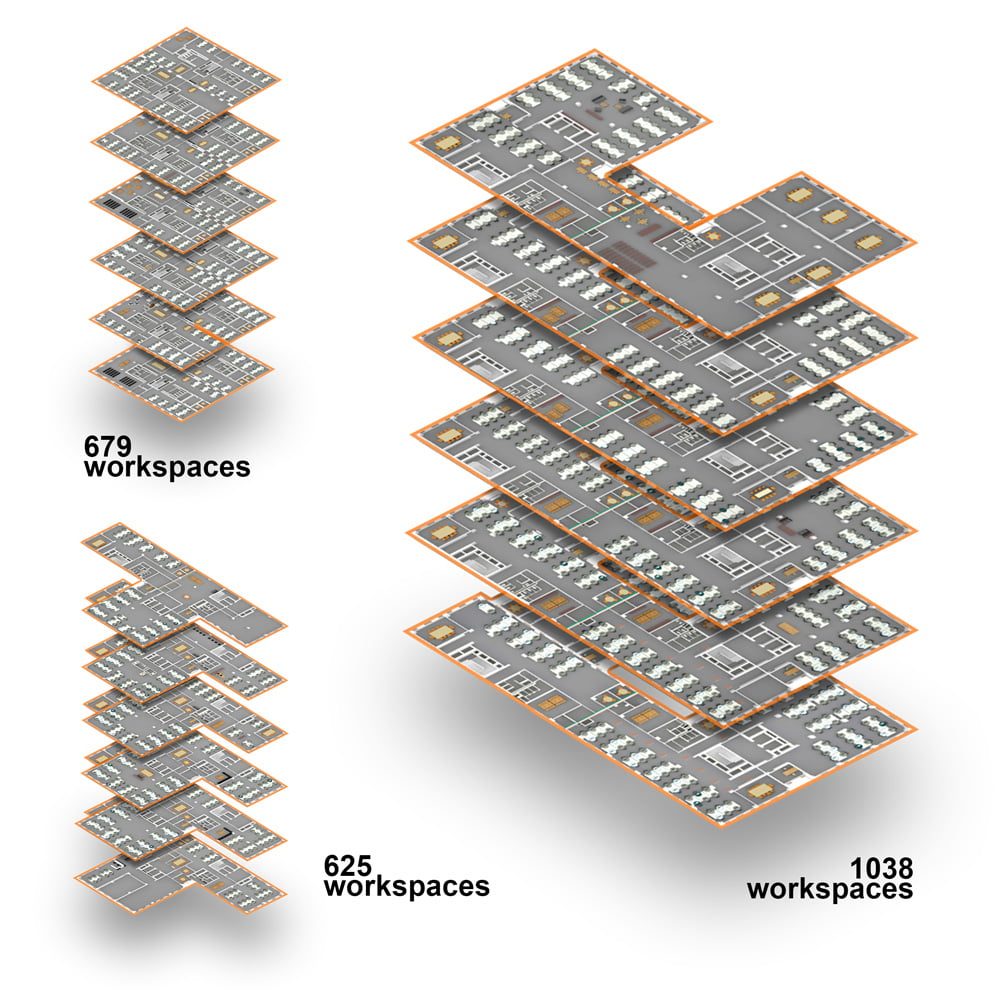
Also, corporate communication and brand awareness are important when considering larger companies. TableAir is very flexible in adapting the visual system color scheme to match your brand guidelines.
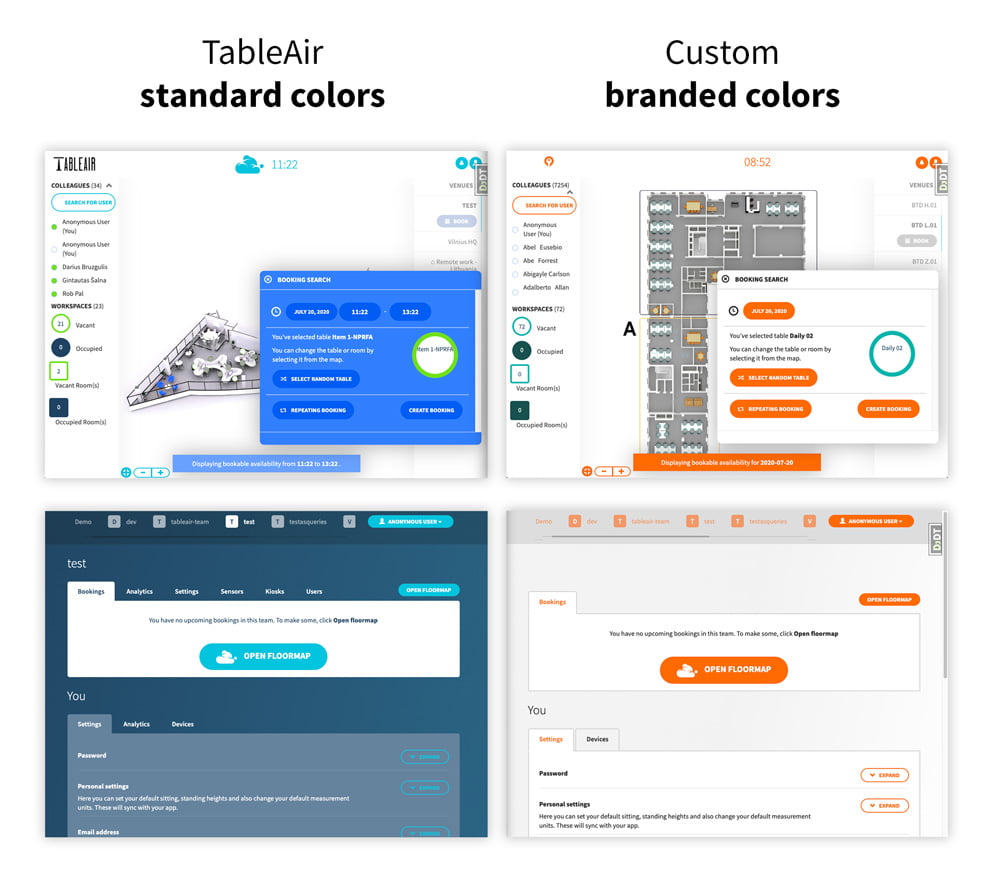
Once the quarantine became a reality in the spring of 2020, companies worldwide faced an unexpected challenge: how do you continue business with minimum effect to a regular work day? TableAir has been at the forefront of this challenge and assisted customers in handling their process and automating the transition. The result of this experience is the following strategy that we’ve combined into six simple steps:
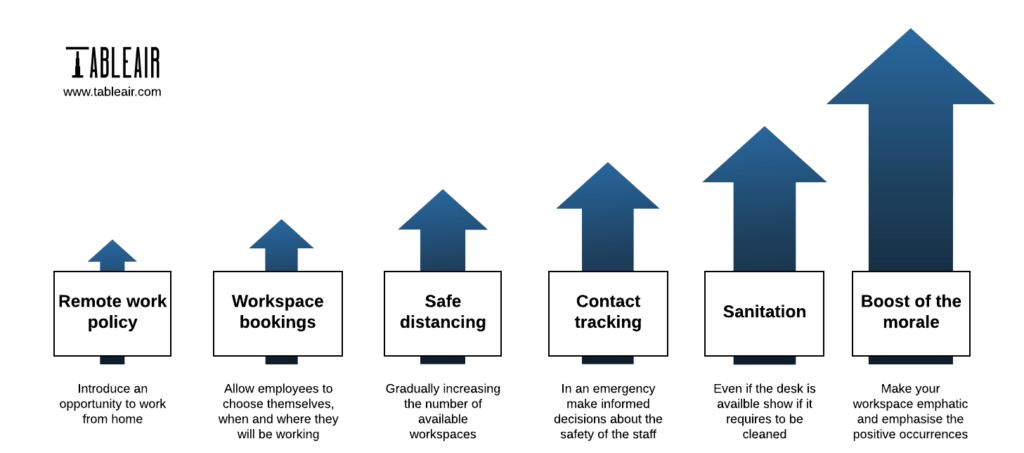
After talking with facility managers and executives regarding the current situation, TableAir found out that one of the following options is chosen most often:
All options seams to work; however, they either require investments into the physical environment or are built on a notion that this phase will pass. In our opinion, the most efficient and cost-effective way to continue business as usual is using a system such as TableAir, which allows you gradually open the office up.
Another very important aspect is the sanitation of the workspaces – companies that can handle this efficiently and smartly will save facility management resources and do it smartly.
The way this works is very simple. Normally in the TableAir system, there are 2 states of the workspaces – they’re either vacant, in which case the workspace is indicated green, or they’re currently in use or booked; in that case, it’s indicated blue.
With the sanitation module enabled, the workspaces now have the 3rd state. After someone booked it and used it, instead of it becoming green=vacant, instead it changes the color to terracotta color, indicating that the desk is free; however, sanitation is required.
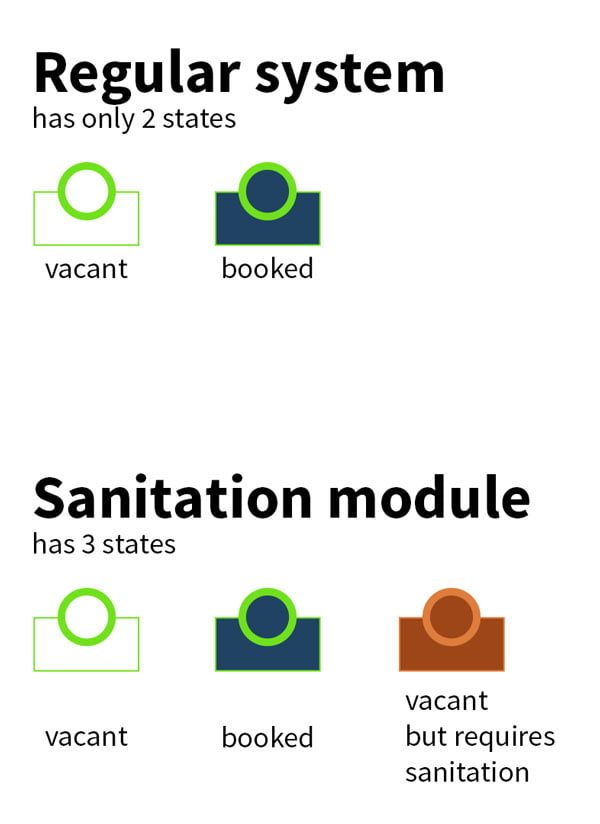
There are a few ways how companies can manage the cleaning of the workspaces. The first one is the most simple = before a booking can be made, a popup appears asking users to confirm if the desk has already been cleaned.
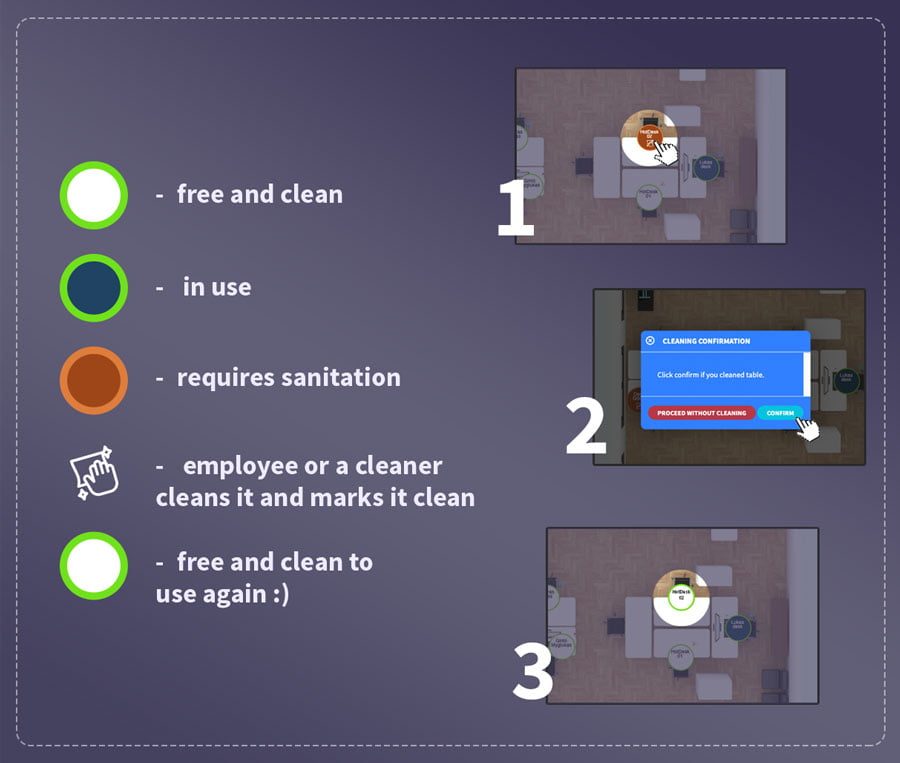
We also encourage the staff to clean themselves – a desk sanitizing dispenser that can be installed on any desk.
However, if you wish that only the cleaning staff cleans the desk, you can do that by providing an NFC card and installing TableAir sensors. See below how Traffic Light Circle might do the job for you.
Just like a software-only version, a 3 states of the indicators are visible; the only difference is the way to change the state users must use their access cards.
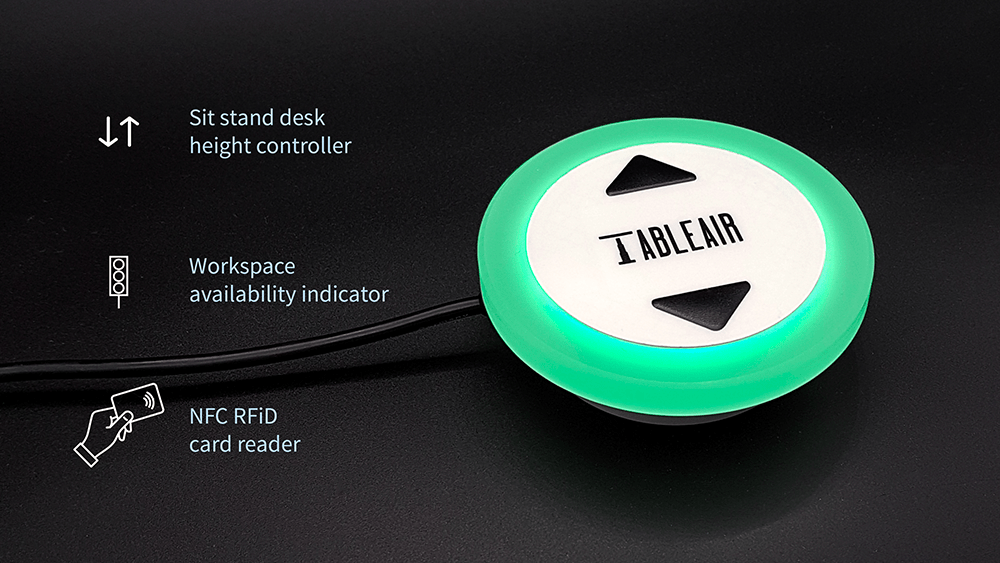
3 Options are available:
All the things mentioned above solve the technicality of returning to work. However, maybe the most important question is how do you boost the morale of your staff and make going to work exciting again?
The answer is by focusing on positivity – emphasizing what’s good around us!
TableAir, being at the forefront of workspace innovation, provides a vision and products that do exactly that.
Wellness should be at a center stage, and we are offering 2 products:
We’re thrilled to have an opportunity to assist companies, and people go back to the normal way of working.
Subscribe to the monthly newsletter!
By clicking the “Subscribe” button above, you agree to the Terms & Conditions and Privacy Policy
2014 – 2024 Proudly designed and made in Lithuania
Over 60,000 users worldwide can’t be wrong – see for yourself why they choose TableAir.